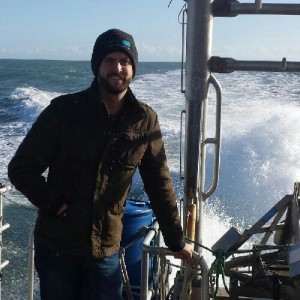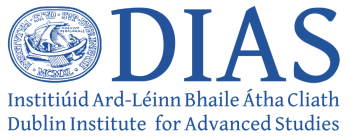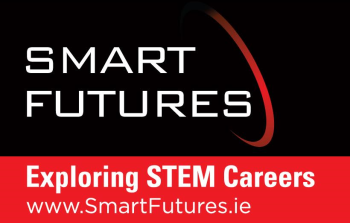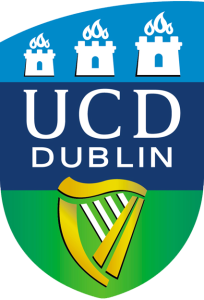Eoin Mac Craith Marine Geologist

Name?
Eoin MacCraith
Job Title?
Marine Geologist
What are your main tasks / responsibilities as a Marine Geologist?
Using different types of sonar to create 3D maps of the seafloor, along with shallow cross-sections of the sediment beneath.
- Analysing and processing the data.
- Mapping and reporting on navigation hazards to the UK Hydrographic Office, who are responsible for nautical charts in Ireland.
- Shipwreck mapping.
- Installing tide gauges and GPS stations around the country to support the marine survey work.
- Crewing small, inshore survey craft. The boats are so small that the scientists are also the crew!
How do you use mathematics in your job?
Sometimes I need to manipulate data into different formats so that it can be processed – I write short pieces of code in Microsoft Excel to achieve this, which requires the use of basic mathematical formulae.
While working offshore on small survey vessels, I sometimes find myself having to work out quick calculations on pieces of paper using various formulae – the most common one is determining the density of the vessel’s sonar pings on the seafloor. These are simple formulae that take in variables such as vessel speed and sonar ping rate.
In general the work is highly numeric – while not usually requiring complex manual calculation on the part of the user, there are large amounts of numeric data to be handled and interpreted.
The concepts behind the work that we do – be it geodetic surveying, processing of bathymetric data, processing of navigational data – involve complex mathematics. Though we do not carry out the calculations ourselves, it helps to have some understanding of what’s taking place when we operate the equipment and the different software packages.
The analytical end of the work does involve a lot of plotting of numeric data, in the form of scatter plots, linear plots etc. Sometimes we use mathematics to determine trends in the data. Again most of this is done in Microsoft Excel. We do a lot of analysis of tide data using such methods.
What type of mathematics do you use to solve problems?
Often it’s just basic subtraction, division and multiplication, but being done on the fly in tricky environments. We use a lot of technology but now and again it’s good to quality control the results with your own brain.
Apart from that, I use a lot of software that itself makes use of very complex mathematics – I’m still in the process of learning what exactly is happening inside the black box when I push the button!
What aspects of the mathematics curriculum or mathematics courses have proven most useful to you?
Applied mathematics has been particularly useful, as it prepares you for the use of mathematics to solve real-world problems. That being said, the entire curriculum is important as it de-mystifies a lot of concepts that can underlie the way different types of software packages work.
Statistics is another important element of maths, for many kinds of scientific work. A good understanding of statistics can help to open a lot of doors. Personally I’ve often found it to be one of my shortcomings and wish I had spent more time on it.
What is your education to date?
In university I studied Physics, Maths and Geology, with my final Bachelor of Science degree focusing on Geology. Following this I did a masters in Oceanography.
I started off with highly mathematical subjects and then gradually departed that end of things and moved more towards studying and interpreting the physical environment through observation. When I started working in the commercial world after finishing my masters, the requirement for mathematical and technical thinking came rushing back in.
What advice would you give to someone considering your job?
One thing that hit me as I started working in oceanographic and geophysical surveying was how mathematical and computational the industry can be. I would strongly advise someone thinking about this career to enhance their skills in using packages such as Microsoft Excel, AutoCAD and GIS packages and perhaps to think about picking up some basic programming languages (for instance Visual Basic). You can certainly work in the industry without that extra knowledge – often a level head and a willingness to learn can be enough! Many skills can be developed on-the-job and I believe many employers are looking for people with the right character and attitude, as much as the right education. However, I do believe that to be successful in it, the road is a lot easier if you can hit the ground running on the computational end of things – even as simple as loading data into Excel, plotting time series and presenting the data in a readable format.
It’s all about going out there, taking a physical environment and turning it all into numbers so that you can actually measure what’s going on. I like looking at the sea and admiring the scenery, but ultimate I have to break it down to precise and accurate measurements. The resulting datasets are huge and ultimately numeric – it’s good not to be too afraid of maths.
Also, once you can programme effectively, the sky’s the limit as to what miniature software packages you can produce to help process and handle some of the datasets generated by marine instrumentation – such an ability is a very valuable asset for potential employers!
What do you find most interesting in your job and what do you find are the main challenges?
It may sound cheesy but exploring the unknown is the most interesting part. Nearly every area of seabed that we map has never been seen before in the detail that modern sonar technology can reveal. Often, the last time it was mapped was with a length of rope with a lump of lead on the end. Therefore, every time I go to sea and switch on the sonar, I never know what I might find!
The main challenge is dealing with electrical equipment in the marine environment. Corrosion and break-down of instrumentation is regular and we fight a constant battle to keep it at bay. On top of that, changing weather and sea conditions can be an actual threat to personal safety – so as well as carrying out complicated, technical work that requires a high degree of precision and concentration, we are also functioning as a vessel crew whose true main objective is to return to port safely every evening. Safety is the first priority – once the vessel is functioning correctly and everyone is out of harm’s way, we can get to the science.





